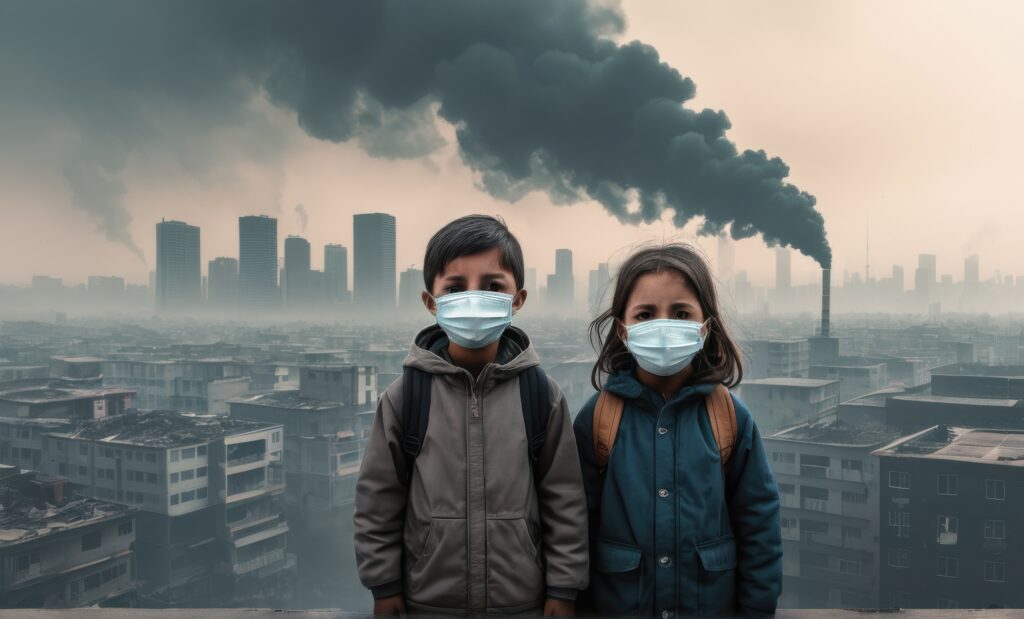Introduction
Environmental pollution affects everyone, but children are especially at risk. The impact of environmental pollution on children’s respiratory health is a growing concern worldwide. Because children’s lungs are still developing, they are more sensitive to harmful air and toxins. As pollution levels rise, more kids face breathing problems and other health issues. Understanding this impact is important for every parent and caregiver. By learning more, you can help protect your child’s lung health and overall well-being.
What is Environmental Pollution?
Environmental pollution means harmful substances in the air, water, or soil. These substances can come from cars, factories, burning trash, or even dust. For example, air pollution is a major problem in many cities. It includes smoke, chemicals, and tiny particles that we cannot always see. Water and soil pollution can also affect health, but air pollution has the biggest impact on children’s lungs. According to the World Health Organization (WHO), millions of children breathe unsafe air every day.
How Does Pollution Affect Children’s Respiratory Health?
Children breathe faster than adults, so they take in more air—and more pollution. Because their immune systems are still growing, they cannot fight off harmful particles as well. As a result, pollution can easily irritate their lungs and airways. Over time, this can lead to long-term breathing problems. In addition, some studies show that children living near busy roads or factories have higher rates of asthma and other lung diseases. Clearly, the environment plays a big role in children’s respiratory health.
Common Respiratory Problems in Children Caused by Pollution
Pollution can cause or worsen several breathing problems in kids. Some of the most common issues include:
For many families, these problems can affect daily life and school attendance. Therefore, it is important to know the signs and act quickly.
Symptoms to Watch For
Early detection can help prevent serious health issues. Watch for these symptoms in your child:
If you notice these signs, especially after outdoor activities or during high pollution days, seek medical advice. Early action can make a big difference.
Diagnosis and Medical Evaluation
Doctors use several methods to check children’s lung health. First, they will ask about symptoms and family history. Next, they may listen to your child’s breathing or use simple tests. For example, a spirometry test measures how well the lungs work. Sometimes, doctors may order chest X-rays or allergy tests. Because children’s symptoms can be mild, regular check-ups are important. Early diagnosis helps manage problems before they get worse.
Prevention and Lifestyle Tips for Parents
Parents can take steps to reduce their child’s exposure to pollution. Here are some helpful tips:
By making small changes, you can help protect your child’s lung health and reduce the risk of pollution-related asthma or allergies.
Treatment and Management Options
If your child develops breathing problems, doctors may suggest several treatments. These can include:
In addition, following your doctor’s advice and keeping your home clean can help manage symptoms. With the right care, most children can lead healthy, active lives.
Community and Policy Actions for Cleaner Air
While families can do a lot, community action is also important. For example, supporting clean air laws and using public transport can reduce pollution. Schools and local groups can plant trees or organize clean-up drives. In many cities, leaders are working to lower pollution by controlling traffic and promoting green spaces. By working together, we can create a safer environment for all children.
Conclusion
Environmental pollution has a strong impact on children’s respiratory health. However, by staying informed and taking action, you can help protect your child. If you have concerns about your child’s breathing or lung health, consult a pediatrician for personalized advice on protecting your child’s respiratory health.
